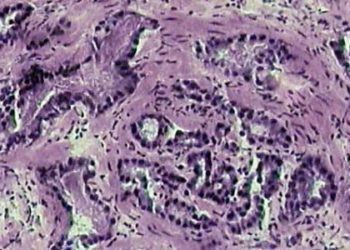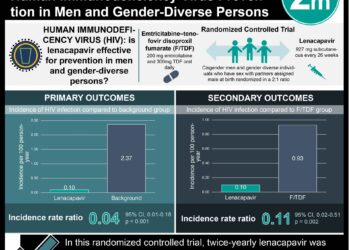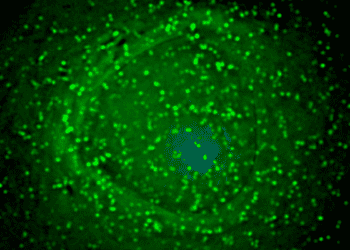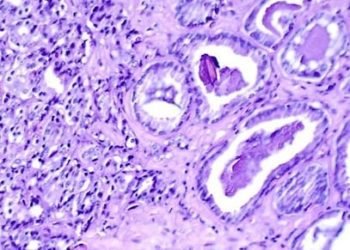2 Minute Medicine Rewind March 02 – 10, 2014
Image:PD
In this section, we will highlight the key high-impact studies, updates, and analyses published in medicine during the past week.
Gene Editing of CCR5 in Autologous CD4 T Cells of Persons Infected with HIV
The Human Immunodeficiency Virus (HIV) utilizes CCR5 as one of its main co-receptors. Mutating this receptor in human CD4 T cells has been proposed as a mechanism for decreasing the efficacy of HIV infection. In this nonrandomized, uncontrolled study for safety, researchers took CD4 T cells from 12 HIV positive patients, rendered the CCR5 receptors in a portion of the CD4 T cells nonfunctional using zinc-finger nucleases (ZFN) and then re-infused the cells back into the patients. Half of the patients then had an interruption in their antiretroviral treatment 4 weeks after the CD4 cell infusion. The study sought to address the safety of such a procedure and its affects on immune reconstitution. One patient experienced a serious adverse event from a transfusion reaction. The infusion procedure resulted in a significant increase in CD4 T-cell count from an average of 448 cells per cubic meter pre-infusion to 1517 cells per cubic millimeter at one week post-infusion (p<0.001). In the patients with an interruption in antiviral therapy, the CCR5-modified CD4 T cells had a significantly lower rate in decline than the unmodified CD4 T cells (1.81 cells per day vs. 7.25 cells per day, p=0.02). This study demonstrates that the infusion of CCR5-modified autologous CD4 T cells is safe and can be further studied as a method for reducing the efficacy of HIV infection.
Past observational studies have shown that high-poverty neighborhoods are associated with increased rates of emotional problems, which has led to the supposition that moving adolescents to lower poverty neighborhoods may have a positive effect on emotional well-being. In this randomized control study, 4604 families in high-poverty neighborhoods from 1994-1998 were randomized to either a lower-poverty voucher group (families were given subsidies if they moved to a low-poverty neighborhood), a traditional voucher group (families were provided housing subsidies for any neighborhood), or a control group (no subsidies). Ten to fifteen years later, investigators evaluated participants aged 13 to 19 years for presence of mental disorders included in the Diagnostic and Statistical Manual of Mental Disorders. The study found that boys in the low-poverty voucher group had significantly higher rates of major depression (7.1% vs 3.5%; odds ratio (OR), 2.2 [95% CI, 1.2-3.9]), PTSD (6.2% vs 1.9%; OR, 3.4 [95% CI, 1.6-7.4]), and conduct disorder (6.4% vs 2.1%; OR, 3.1 [95% CI, 1.7-5.8]). Similarly, boys in the traditional voucher group also had increased rates of PTSD compared with the control group (4.9% vs 1.9%, OR, 2.7 [95% CI, 1.2-5.8]). In contrast, girls in the traditional voucher group had lower rates of major depression (6.5% vs 10.9%; OR, 0.6 [95% CI, 0.3-0.9]) and conduct disorder (0.3% vs 2.9%; OR, 0.1 [95% CI, 0.0-0.4]). This study shows that interventions to relocate adolescents to low-poverty neighborhoods may increase rates of depression, PTSD, and conduct disorder among boys but may reduce rates of depression and conduct disorders among girls.
Handwashing with soap is an extremely cost-effective preventative behavior for reducing rates of diarrhea and respiratory infection, which together account for a large proportion of child deaths globally. Despite this fact, rates of handwashing are low in places such as rural India even though most individuals understand that germs on hands can cause disease. In this cluster-randomized trial, investigators studied the effectiveness of using a village-level educational campaign that sought to target the emotional drivers of behavior (such as disgust, the desire to fit in, and status), rather than improving knowledge, in order to change handwashing adherence. 14 villages were assigned to receive either a 4-day multimedia educational campaign that reinforced emotional drivers of behavior or no intervention (control). The control villages were then assigned to receive an abbreviated version of the intervention at 6 months. Researchers found that in comparison to control groups, there was a significant increase in handwashing with soap at key events after the educational campaign at 6 weeks (19% [SD 21] vs. 4% [2], p=0.005) and at 6 months (27% [7] vs. 6% [3], p=0.02). At 12 months after education in the intervention group (which was also 6 months after abbreviated education in the control group), there was little difference in handwashing rates (29% [9] vs. 29% [13]). This study shows that there was significant increase in handwashing behaviors after an educational campaign that focused on emotional drivers of behavior.
Twin-to-twin transfusion syndrome is a serious condition seen in monochorionic twin pregnancies and is currently treated by fetoscopic laser coagulation, a procedure that can have complications due to residual placental vascular anastomoses. This study sought to investigate the efficacy and safety of a new surgery technique called the Solomon technique that uses laser coagulation of the entire vascular equator. In this randomized control trial, 274 women were randomly assigned to receive either the Solomon technique or standard laser coagulation. Investigators found that there was a lower composite incidence of twin anaemiapolycythaemia sequence, recurrence of twin-to-twin transfusion syndrome, perinatal mortality, and severe neonatal morbidity in the group receiving the Solomon technique compared to the group receiving standard laser coagulation (34% versus 49% OR 0.54, 95% CI 0.35-0.82). This study suggests that the Solomon technique may be a more effective method for treating twin-to-twin transfusion syndrome.
Radical Prostatectomy or Watchful Waiting in Early Prostate Cancer
Radical prostatectomy is known to reduce the 15-year mortality rate in men with localized prostate cancer. The longer-term consequences of this procedure remain unclear. In this study, researchers re-evaluated outcomes from the Scandinavian Prostate Cancer Group Study Number 4 (SPCG-4), which had randomly assigned 695 men from 1989-1999 with early prostate cancer detected clinically to either radical prostatectomy or watchful waiting. After 23.2 years of follow-up, 63 of the 347 men in the surgery group and 99 of the 348 men in the watchful-waiting group had died from prostate cancer (relative risk 0.56, 95% CI 0.41-0.77, p = 0.001). The number needed to treat to prevent one prostate cancer death was 8. Surgery had the greatest mortality reduction in men younger than 65 years (relative risk 0.45) and those with intermediate-risk prostate cancer (relative risk 0.38). This follow-up study confirms that radical prostatectomy is effective for reducing mortality in the long term in patients with locally detected prostate cancer.
© 2012-2014 2minutemedicine.com. All rights reserved. No works may be reproduced without written consent from 2minutemedicine.com. Disclaimer: We present factual information directly from peer reviewed medical journals. No post should be construed as medical advice and is not intended as such by the authors or by 2minutemedicine.com. PLEASE SEE A HEALTHCARE PROVIDER IN YOUR AREA IF YOU SEEK MEDICAL ADVICE OF ANY SORT. Content is produced in accordance with fair use copyrights solely and strictly for the purpose of teaching, news and criticism. No benefit, monetary or otherwise, is realized by any participants or the owner of this domain.







